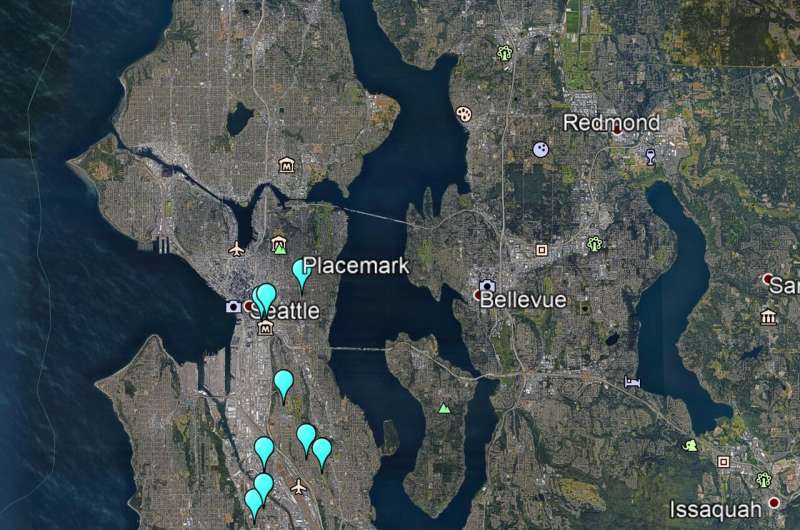Soil tested for hidden contaminants in community gardens

This year saw many people rediscovering an interest in gardening, digging in the dirt and maybe even harvesting vegetables from a garden plot. But around the Puget Sound, not all garden soils are created equal. Soil, particularly in urban areas, can hold contaminants that are unhealthy for people who handle it or eat things grown in the ground.
Chemicals left behind by vehicles, air pollution and heavy industry can show up in the ground and in plants. Soil can reflect our human activities, says Melanie Malone, assistant professor in UW Bothell's School of Interdisciplinary Arts & Sciences. Even compost and wood chips we add to our gardens can bring in the residues of pesticides that were once applied to those materials.
Malone's recently published work investigates these contaminants and their prevalence in shared garden spaces like community gardens. She started the Urban Garden Project as a way to measure soil pollution and share the information with community garden sites around the Seattle area. Focusing on sites and communities often impacted by pollution, she notes that contaminated soil and marginalized populations often go hand in hand. Unsurprisingly, south Seattle, home of the Duwamish River Superfund site and within reach of Tacoma's historic Asarco smelter plume, is an area that usually measures high in pollutants.
The chemicals Malone most commonly looks for are lead, arsenic, petroleum products and glyphosate, an herbicide found in products like RoundUp.
When Malone meets with gardeners, she suggests ways to limit harms from contaminants they identified—solutions like bringing in new soil, wearing gloves to limit contact with soil, and determining where to plant vegetables and which parts of a plant are safer to eat based on the concentration of contaminants in the soil. She has also begun teaching gardening groups how to sample their own soil so they can inform themselves about land they're already using.
In this video, we see Malone in partnership with Renew Church gardeners in Lynnwood and the Duwamish Valley Youth Corps in South Park, taking soil samples from a well-used neighborhood park on the Duwamish River.
"The fact that they're really into it, and then can have their own insight into what's in their soils and what's in their plants, and how to do it accurately—is really profound," said Malone.
Most of gardens she's sampled had contamination levels that exceeded safety guidelines, so it makes a difference when community members know the potential risks and how to take precautions.
"I would say to test your soil, know your site's history, and be aware of what you're putting into your garden," said Malone. She created and shared this online tool kit to instruct gardeners interested in testing their soil.
More information: Melanie Malone, Seeking justice, eating toxics: overlooked contaminants in urban community gardens, Agriculture and Human Values (2021). DOI: 10.1007/s10460-021-10236-8
Provided by University of Washington


















